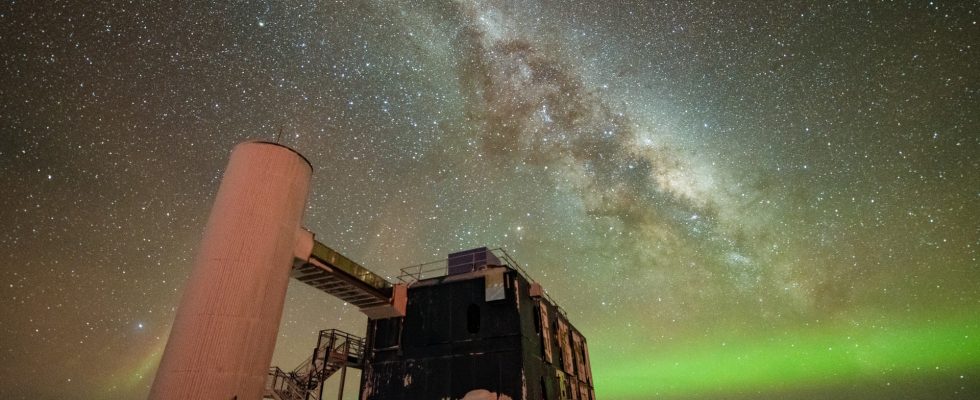Neutrinos play an important role in nuclear physics, for example in nuclear fusion inside the sun. But the neutrinos that IceCube is searching for are millions to billions of times more energetic and are produced in stellar explosions and in the vicinity of extremely massive black holes in distant galaxies. But also in our Milky Way, the interaction of cosmic rays with gas and dust should produce high-energy neutrinos, together with gamma rays. But while this gamma radiation could be detected from satellite observatories, the search for the galactic neutrinos has so far been unsuccessful.
The problem: The cosmic radiation also produces neutrinos in the earth’s atmosphere and this noise is superimposed on the desired signal from the Milky Way. However, by improving their methods, the IceCube researchers have now succeeded in making the neutrinos from the Milky Way visible. On the one hand, the scientists filtered out those events that come from the southern sky and thus from the direction of the center of the Milky Way. And to determine the exact origin of the registered neutrinos, a machine-learning-based method developed primarily at the TU Dortmund was used. “These improved methods meant that we were able to use about ten times more neutrinos for the evaluation than before, and with better directional resolution,” explained Mirco Hünnefeld from the TU Dortmund. “All in all, our analysis was three times more sensitive than previous search methods.”
For the first time, the IceCube data evaluated in this way provide an image of the Milky Way as it would appear with “neutrino eyes”. “And this image confirms what we know so far about the Milky Way and cosmic rays,” said IceCube researcher Steve Sclafani. But that’s just the beginning. IceCube continues to collect data and the methods are to be further improved. “This is how we get an image with better and better resolution,” explained Denise Caldwell of the IceCube project. In this way, the scientists want to find out exactly where the neutrinos originate. “And of course we also hope to discover previously unknown, never-before-seen structures in our Milky Way.” (dpa/dam)

